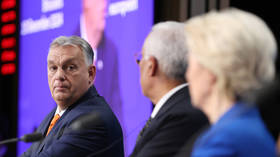80% of city residents across the globe breathe polluted air, WHO says

More than 80 percent of city residents across the globe are breathing polluted air, the World Health Organization said, adding that people who live in low-income cities are most affected by air pollution.
“Urban air pollution continues to rise at an alarming rate, wreaking havoc on human health,” says Dr Maria Neira, director of the WHO Department of Public Health.
The organization compared a total of 795 cities in 67 countries for levels of pollution between 2008 and 2013. The WHO said it considered such pollutants as sulfate, nitrates and black carbon, “which penetrate deep into the lungs and into the cardiovascular system, posing the greatest risks to human health.”
According to the WHO data, “98 percent of cities in low- and middle income countries with more than 100,000 inhabitants do not meet WHO air quality guidelines.” In high-income cities, the total is 56 percent.
The study ranked cities in India, Iran and Saudi Arabia as the most polluted in the world. People who live in such polluted cities have a high risk of stroke, heart disease, lung cancer, and chronic and acute respiratory diseases, including asthma, the organization said.
“Air pollution is a major cause of disease and death,” says Dr Flavia Bustreo, WHO assistant director-general for Family, Women and Children’s Health. “When dirty air blankets our cities the most vulnerable urban populations—the youngest, oldest and poorest—are the most impacted.”
The WHO data says that the highest urban air pollution levels were seen “in low-and middle-income countries in Eastern Mediterranean and South-East Asia Regions,” as their annual mean levels often exceeded WHO limits by five-10 times.
The dirtiest air was recorded in the city of Zabol in Iran, WHO data showed, as seen by Reuters and AFP. India had four cities on the list: Gwalior, Allahabad, Patna and Raipur. Riyadh and Al Jubail in Saudi Arabia were also among top 10 most polluted cities in the world, according to the organization.
India's capital New Delhi, however, was ranked the 11th worst city. In 2014 it was considered the worst-polluted city, but since then authorities have been trying to tackle the high level of pollution.
Overall, global urban air pollution levels have increased by 8 percent, “despite improvements in some regions,” the group said. “Most sources of urban outdoor air pollution are well beyond the control of individuals and demand action by cities, as well as national and international policymakers to promote cleaner transport, more efficient energy production and waste management.”














